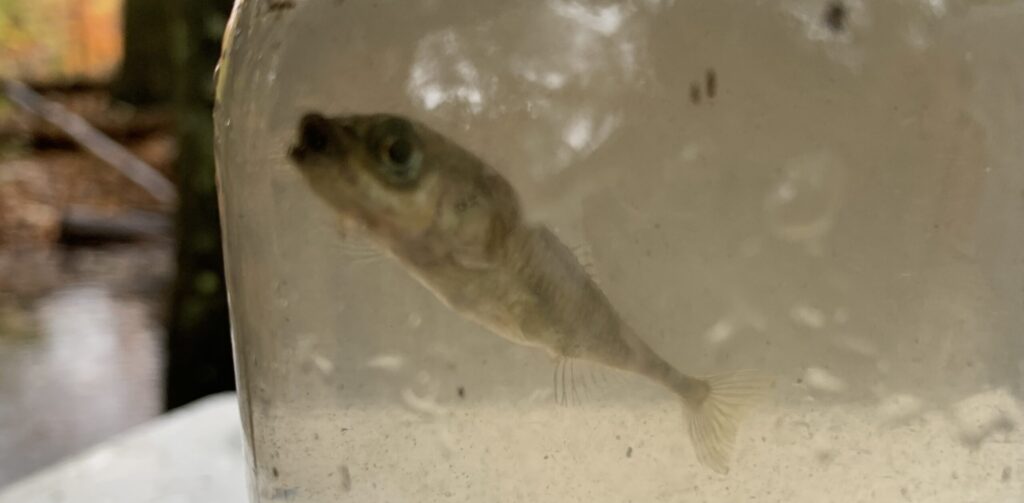
Four years ago, our team began monitoring a uniquely threatened Massachusetts population of the typically saltwater species, the Threespine stickleback. This population is unique in that it inhabits an urban freshwater pond, despite being typically a saltwater species, and is the only population in the state of Massachusetts to do so.

Our initial survey of this population in 2020 resulted in an estimated population size of around 500-1000 sticklebacks. Since continuing this monitoring project we’ve observed an exponential decline in the population, with no obvious reason why, until this year. During our survey this year, we observed zero sticklebacks but instead uncovered one potential contributor to the decline of this one of a kind population, a goldfish.

This goldfish is the same as the kind you’d win at the fair or buy at a pet store, though it does not natively occur in the wild here in North America. When released, this species poses major threats to our native wildlife, especially small fish, as this species feeds on small insects and eggs. This species is often thought to be rather small, as when kept in a typical fish bowl or even a small tank they only reach about 5-6 inches in length, but their size is dependent on their resources, how large of an environment they have access to and how much food they have to consume. So what was once a small pet goldfish, when released into wild wetlands, can triple in size and become a predator of small native fish and their vulnerable eggs.

It is essential to our native species we do not release our pets into the wild no matter the size. Discarding captive kept animals into the wild poses abundant threats to the existing populations that inhabit that location, while also presenting welfare concerns for the sadly rejected animal itself. You should always do your research on any animal you are looking to take in, even when winning one at the fair, and never release any pet into the wild. Responsible pet ownership can help protect the health and welfare of wildlife, and plays a key role in preserving unique populations like the Threespine stickleback.
